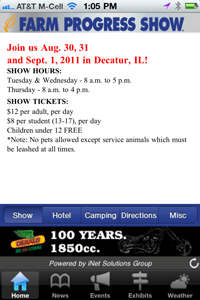As the president’s Magical Midwestern Tour rolled on, some of his comments about agriculture were getting negative reviews.
 Suggestions by President Obama in Atkinson, Illinois Wednesday that farmers who are concerned about more government regulations should just “contact USDA” about it got particular attention.
Suggestions by President Obama in Atkinson, Illinois Wednesday that farmers who are concerned about more government regulations should just “contact USDA” about it got particular attention.
The best of all came from Politico reporter MJ Lee, who decided to take the advice of the POTUS and try and contact USDA himself to get an answer to the question posed to Obama about the impact of pending regulations regarding noise, dust and water runoff on farming operations. After more than ten different phone conversations with various people on the state and national level, the reporter finally ended the quest with the response received from USDA’s main media relations department, via email:
“Secretary Vilsack continues to work closely with members of the Cabinet to help them engage with the agricultural community to ensure that we are separating fact from fiction on regulations because the administration is committed to providing greater certainty for farmers and ranchers. Because the question that was posed did not fall within USDA jurisdiction, it does not provide a fair representation of USDA’s robust efforts to get the right information to our producers throughout the country.”
The USDA Radio Newsline features a story from our friend Gary Crawford in an attempt to clarify the president’s remarks. “The president’s response was right on target,” said Vilsack. “We’ll continue at USDA to work with EPA so that they understand fully and completely the impact that proposed regulations may have on agriculture.” Listen to Gary’s report here: Gary Crawford, USDA Radio
The POTUS was challenged more directly about regulations at his last stop on the tour in Alpha, Illinois by the POTIFB – president of the Illinois Farm Bureau Philip Nelson. “And I guess my challenge, Mr. President, is that you work with the EPA Administrator to put some common sense back into some of these regulatory discussions so we don’t regulate farmers out of business,” Nelson said.
The president’s response in Alpha was similarly dismissive, although he left out the advice to call the USDA. “Some of these regulatory concerns that people have, frankly, are unfounded in the sense that if somebody even has an idea or a thought about some regulation, then right away the message is sent out, they’re coming and they’re going to make it impossible for you to farm and this and that and the other,” he said.
Obama continued the same message in an interview with National Association of Farm Broadcasting President (POTNAFB) Tom Steever of Brownfield Ag News. “A lot of times folks will get geared up before a regulation’s even been proposed because there’s a rumor that there might be some regulation out there,” said Obama, adding that he wants “specifics” and not just “general accusations that the EPA’s coming after agriculture.” Listen to Tom’s question about EPA regulations and Obama’s answer here: Tom Steever and President Obama
National Cattlemen’s Beef Association Immediate Past President (POTNCBA) Steve Foglesong said the president “is out of touch with rural America” and that he “has no clue what regulations his bureaucratic agencies are proposing or he simply doesn’t care.”
And, as the Politico reporter points out, still no real answer to the farmer’s question.
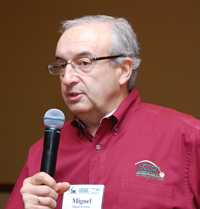 Participants in the US Soybean Export Council Animal Utilization Stakeholders meeting got a quick trip around the world in about four hours Saturday morning with presentations on global opportunities for soybean exports for animal use.
Participants in the US Soybean Export Council Animal Utilization Stakeholders meeting got a quick trip around the world in about four hours Saturday morning with presentations on global opportunities for soybean exports for animal use.
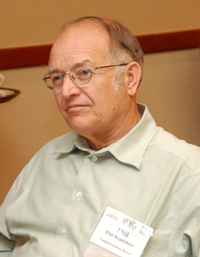 One of the many
One of the many  The first ever
The first ever  Jim says this the first meeting in a series to plan out projects for FY 2013. “So this is the first meeting to gather industry and regional inputs, then we’ll be working on strategy, and finally we come together and get final approval for all the projects we come up with,” Jim said. “That’s about a six month process and this is step one in the process.”
Jim says this the first meeting in a series to plan out projects for FY 2013. “So this is the first meeting to gather industry and regional inputs, then we’ll be working on strategy, and finally we come together and get final approval for all the projects we come up with,” Jim said. “That’s about a six month process and this is step one in the process.”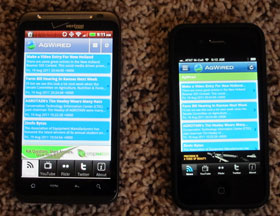

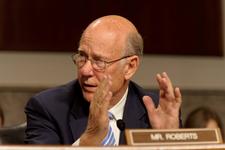

 The tour had a record number of participants this year, over 200, and many of them were farmers who had the chance to learn about conservation practices from other farmers. During time on the bus, Tim did an interview with one of the farmer participants, Gerald Heck of Monroe, Michigan.
The tour had a record number of participants this year, over 200, and many of them were farmers who had the chance to learn about conservation practices from other farmers. During time on the bus, Tim did an interview with one of the farmer participants, Gerald Heck of Monroe, Michigan. 
 Suggestions by President Obama in Atkinson, Illinois Wednesday that farmers who are concerned about more government regulations should
Suggestions by President Obama in Atkinson, Illinois Wednesday that farmers who are concerned about more government regulations should 